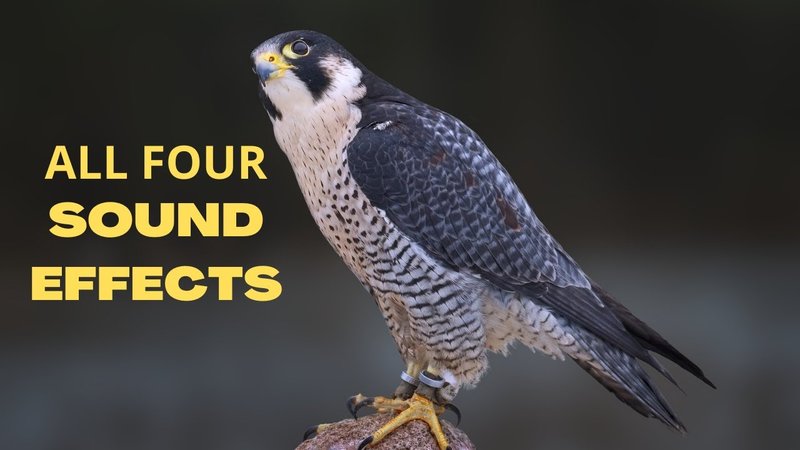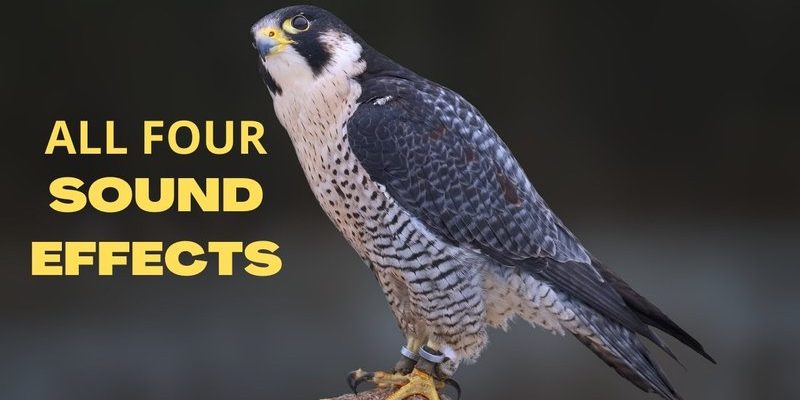
Imagine being in a bustling café where everyone is chatting away. Each conversation is distinct, carrying a mixture of excitement, concern, and companionship. That’s a bit like what’s happening in the world of Peregrine Falcons. Their vocalizations can tell you a lot about their mood and intentions, and understanding these sounds can deepen your appreciation for these majestic creatures. So, let’s dive into the world of Peregrine Falcon vocalizations and unlock the meanings behind their calls.
What Makes Peregrine Falcons Special?
When you think about Peregrine Falcons, speed is likely the first thing that comes to mind. These birds are the fastest animals on the planet, diving at speeds over 240 miles per hour! But aside from their impressive physical abilities, they’re also fascinating communicators. Their vocalizations play a crucial role in their daily lives and interactions.
In the wild, communication is key for survival. For Peregrine Falcons, vocalizations help them establish territory, attract mates, and alert each other to potential dangers. Just like how friends will call to each other across a crowded space, these birds use their voices to maintain connections and ensure safety.
Moreover, studying their calls can provide insights into their behavior and emotional states. It’s like being able to read a friend’s mood just by their tone of voice. Understanding what these birds are saying can enhance your experience when observing them in nature.
The Different Types of Vocalizations
Peregrine Falcons have a rich repertoire of sounds, each uniquely suited to specific situations. Here’s a closer look at some of the primary vocalizations you might hear:
- Alarm Calls: These are loud, harsh cries that signal danger. If a falcon senses a threat, such as a predator or even a human getting too close, it will emit a high-pitched scream to alert others around.
- Contact Calls: These softer, more melodic sounds are used to communicate with mates or young chicks. They serve to maintain connection without attracting unwanted attention from predators.
- Courtship Calls: During breeding season, males will produce a series of sweet, whistling sounds to attract a female. It’s like a love song that showcases their fitness and readiness to mate.
- Chatter: This rapid series of short calls is usually heard during the mating season. It often signifies excitement or enthusiasm between pairs.
Every sound has a purpose in the Peregrine Falcon’s life. Just like you might use different tones when talking to a friend, a pet, or a boss, these birds adapt their calls to fit their needs.
Alarm Calls: What They Sound Like and Why They Matter
Alarm calls are one of the most vital vocalizations for Peregrine Falcons. When they perceive danger, they issue a loud, shrill cry. This sound can carry over long distances, alerting others in the area. You might say it’s their version of shouting “Heads up!” to their fellow birds.
These calls serve a dual purpose. First, they warn other falcons of impending threats such as hawks, eagles, or even humans approaching their nesting sites. Secondly, they can cause potential threats to think twice about coming closer. The piercing quality of their alarm calls can create a sense of urgency and fear in the hearts of predators.
Observing a Peregrine Falcon issuing alarm calls can be quite a spectacle. You might spot them flapping their wings aggressively or diving toward the threat. It’s a display of bravery, emphasizing how important their vocal communication is for survival.
The Role of Contact Calls in Family Dynamics
Contact calls play a significant role in the family life of Peregrine Falcons. These softer sounds are often used between parents and their young chicks. When falcon parents are feeding their chicks, you’ll hear gentle, reassuring calls that let their little ones know they’re nearby.
These calls can also help maintain group cohesion. Imagine a family calling out to each other in a crowded place to stay connected. For Peregrine Falcons, these vocalizations are essential for the survival of the young, especially when they’re learning to fly and hunt.
Interestingly, the chicks will start mimicking these contact calls even before they leave the nest. It’s a fascinating example of how communication skills develop in the wild. As the chicks grow, they begin using these calls with their parents, strengthening familial bonds.
Courtship Calls: A Falcon’s Love Song
During breeding season, the dynamics change, and courtship calls come into play. Male Peregrine Falcons are known for producing a series of melodious whistling sounds to woo potential mates. It’s like their romantic serenade, showcasing their fitness and attractiveness.
These calls often happen during aerial displays, where the male will perform acrobatics in mid-air, diving and swooping while vocalizing. It’s a spectacular sight and sound, combining grace with purpose. The more impressive the display, the more likely a female will take notice.
Interestingly, these courtship calls can also strengthen the bond between pairs. The mating ritual, which includes vocalizations, strengthens relationships during the nesting phase. The better the communication, the more successful the partnership tends to be.
Understanding Chatter: Excitement in the Air
Chatter is a series of rapid, short calls often heard during mating season. This vocalization indicates excitement and can be a sign of strong feelings between a pair of falcons. When you hear this chatter, it’s almost like you’re tuning into a lively conversation between friends.
This vocalization usually occurs when pairs are together—perhaps when they’ve successfully captured prey or are basking in the sun. Chatter can also signal playful interactions between mates, showing their enthusiasm for each other.
For birdwatchers, witnessing this chatter can be one of the most rewarding experiences. It’s a window into the personal lives of these magnificent birds, allowing you to appreciate their social behaviors on a deeper level.
How to Identify Peregrine Falcon Vocalizations
Identifying vocalizations might seem tricky at first, but with some practice, it becomes easier. Here are a few tips to help you recognize their calls:
- Listen for the Pitch: Alarm calls are sharp and high-pitched, while contact calls are softer and more melodic. Pay attention to the difference in tones.
- Notice the Context: Observe when and where each call occurs. Alarm calls often happen in response to a perceived threat, while contact calls are often heard around nesting sites.
- Look for Behavior: Visual cues can help. For example, if a falcon is flapping its wings vigorously while calling, it’s likely issuing an alarm call.
With some patience and keen observation, you can soon become familiar with the voice of the Peregrine Falcon. It’s an exciting journey that connects you more deeply to the world around you.
Why Understanding Vocalizations Matters
Understanding Peregrine Falcon vocalizations goes beyond simple curiosity. It opens a window into their complex social structures and behaviors. By comprehending their calls, you can better appreciate what these birds go through in their daily lives.
Furthermore, knowledge of their vocalizations can be crucial for conservation efforts. If we can interpret their warning calls, for instance, we could better protect them from threats in their environment. Every piece of information helps in the broader context of wildlife conservation.
In conclusion, the vocalizations of Peregrine Falcons are rich and varied, revealing much about their lives and interactions. By taking the time to learn and understand these sounds, you’re not just hearing bird calls; you’re connecting with nature in a meaningful way. So, next time you hear that piercing cry, you’ll know just what this magnificent bird is saying.

